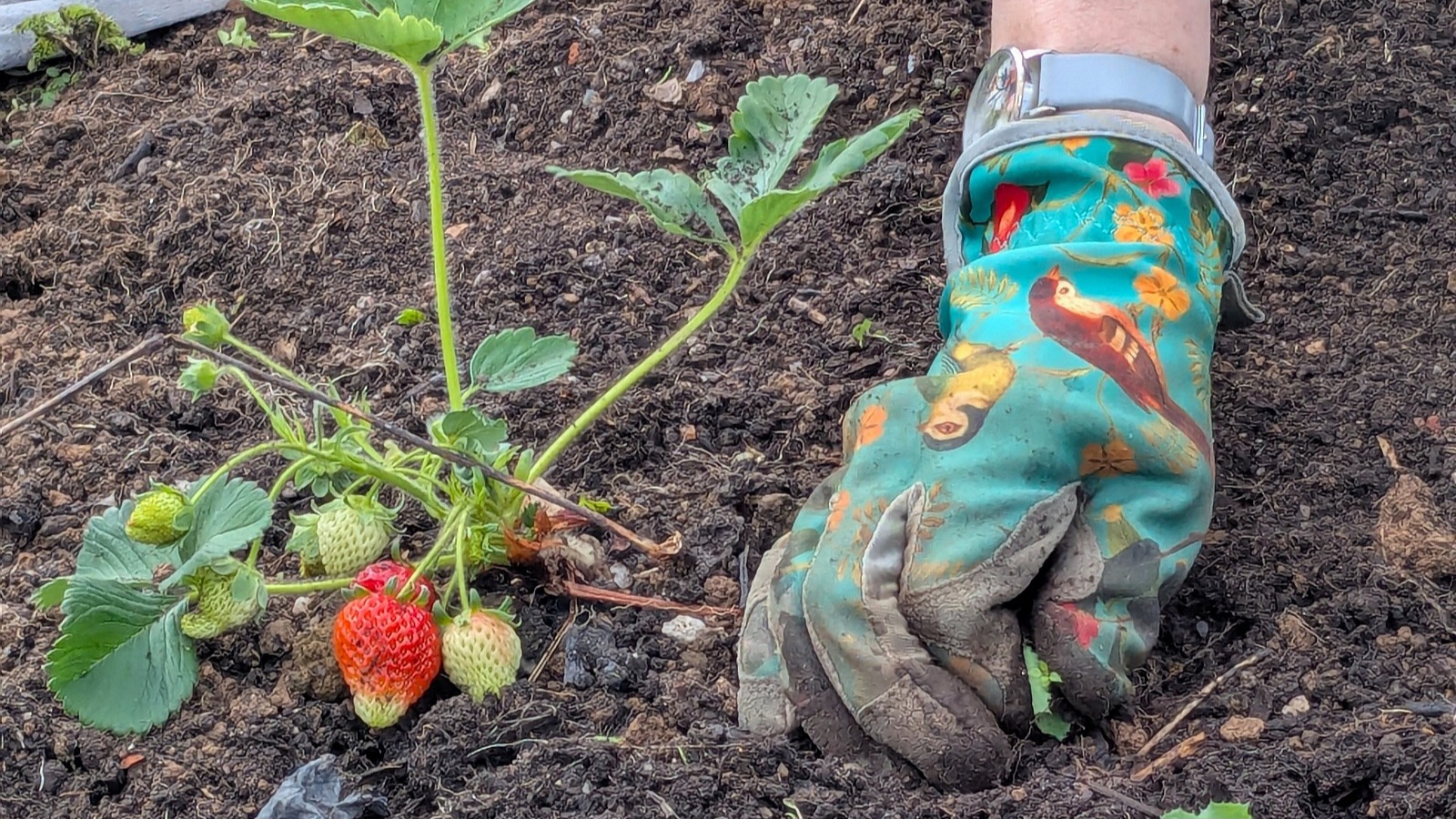
May 19, 2025
Our own strawberries are not quite ready yet, instead we all have a punnet from Tamara Summer Fruits, near Saltash.
Some of this week’s veg boxes also have a garlic scape – the long stalks with a flower head that grow out of garlic bulbs planted the previous autumn.
The tender green stalks are edible and tasty, with a mild garlic flavour. They’re delicious chopped and fried lightly, then scattered into salads, stirred through pasta dishes, or used to garnish risottos and pizza. More recipe suggestions here.
In this week’s veg shares:
*garlic scape or broad bean tops
*salad leaves ‘Salad Bowl’
*lettuce ‘Little Gem’
*radishes
strawberries (Tamara Summer Fruits, Saltash)
cabbage (Trerair Farm Shop, St Eval)
potatoes ‘Melody White’ (Trerair)
* = grown to organic principles. Please wash all veg thoroughly
Produce grown by Camel CSA, unless otherwise indicated
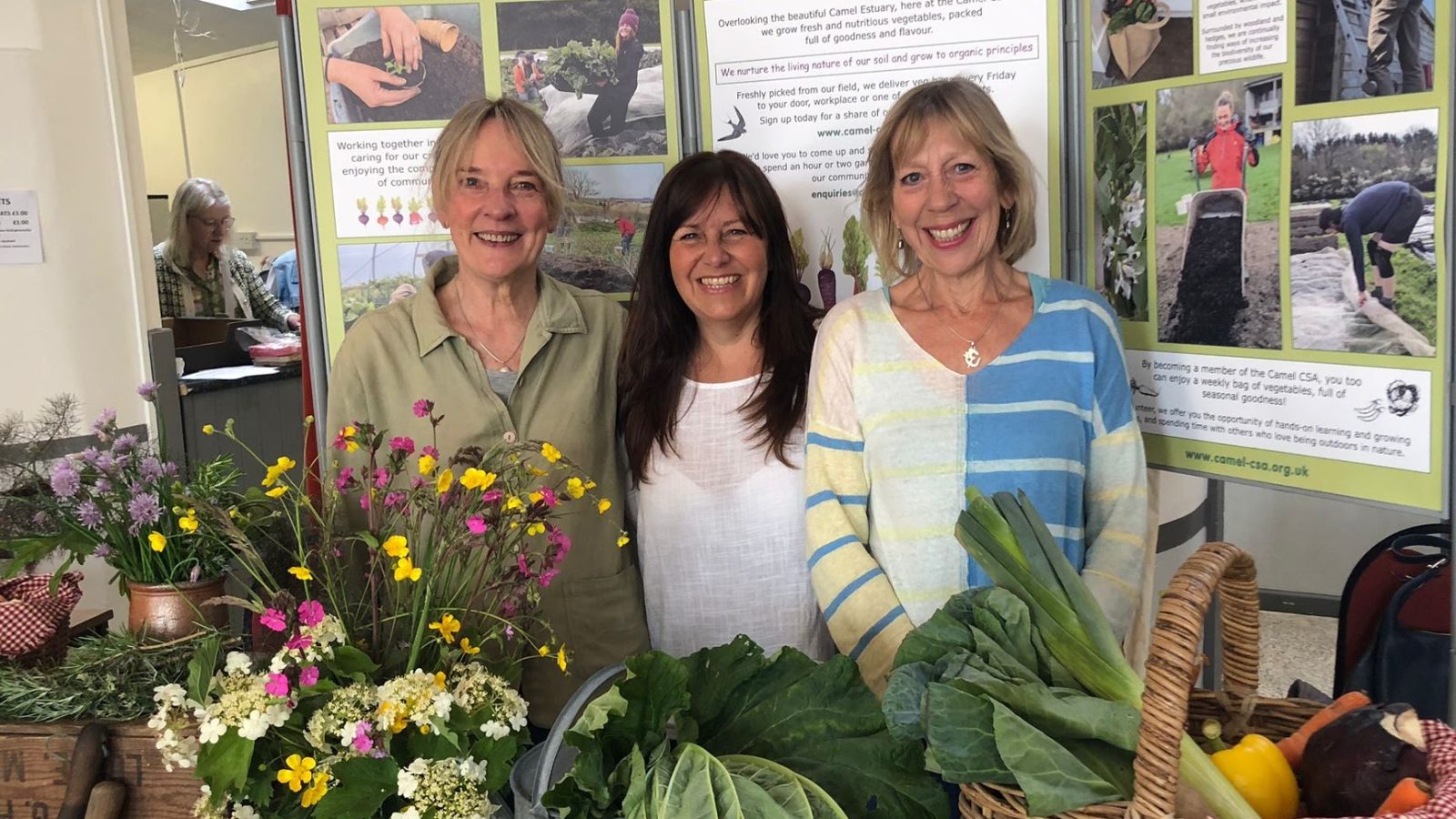
May 13, 2025
We’re thrilled to be taking part in the Community Day in Wadebridge Town Hall this Saturday 17 May from 10am-3pm.
Come along to find out more about the vegetables we’re growing and how you can get a share of our delicious, healthy, locally-grown produce.
Camel CSA’s promotion team were also at last Saturday’s Troubled Waters event in Wadebridge. Veronica, Debbie and Claire chatted with numerous people wanting to know what we’re doing to support local food, seasonal eating, and nature-friendly farming.
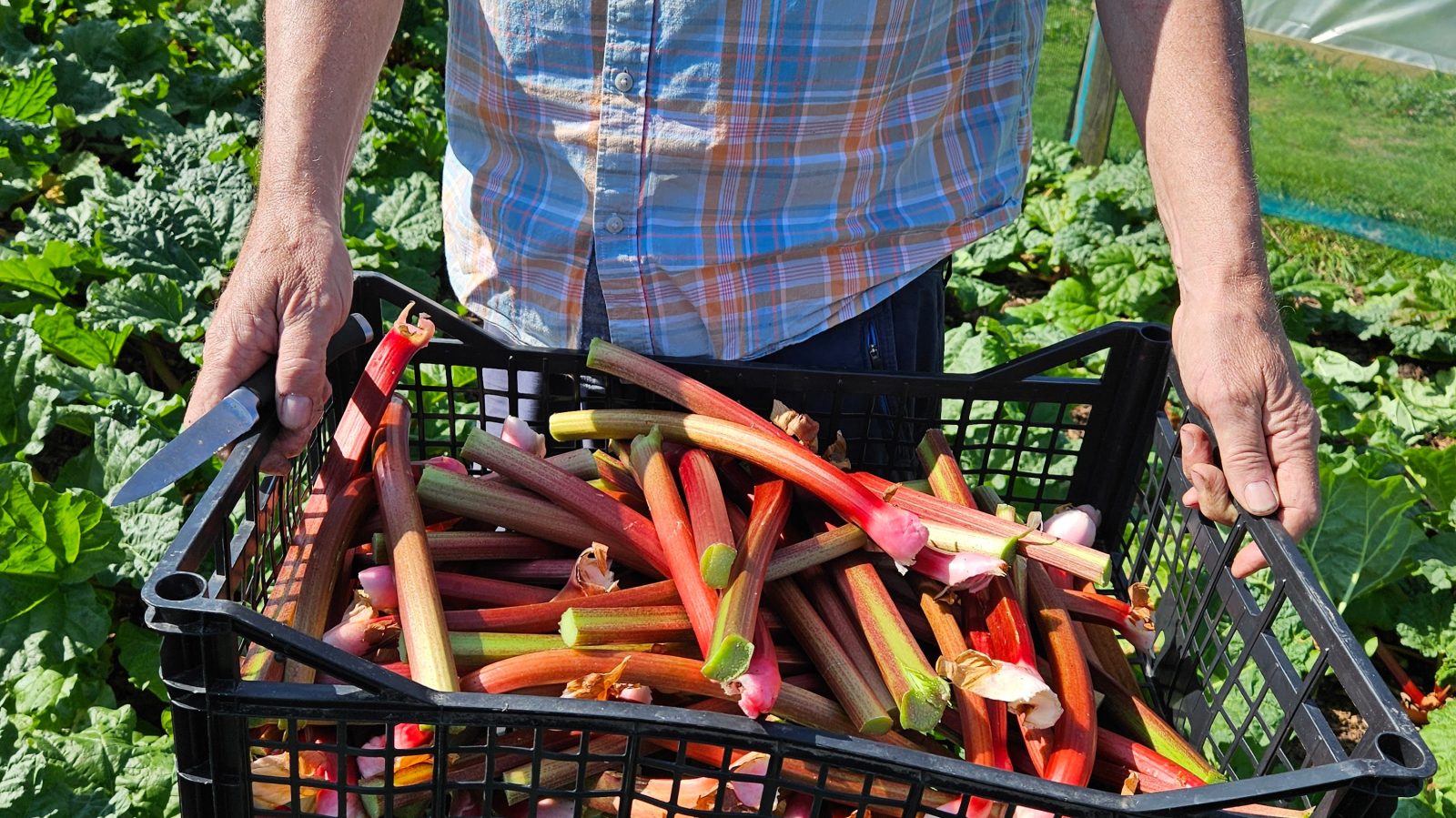
May 11, 2025
The selection of seasonal produce in our boxes this week reflects the time of year when we go through the annual ‘hungry gap’.
It’s when the winter crops have finished and many of the spring plantings aren’t yet ready to harvest.
But we can always rely on our rhubarb bed for a reliable early crop!
In this week’s veg shares:
*rhubarb
*coriander or parsley / chives
*can of carlin peas (Hodmedod’s)
red cabbage (Trerair Farm Shop, St Eval)
potatoes ‘Manitou’ (Trerair)
spring greens (Continental Wholesale Fruits, Liskeard)
leeks (Continental)
* = grown to organic principles. Please wash all veg thoroughly
Produce grown by Camel CSA, unless otherwise indicated
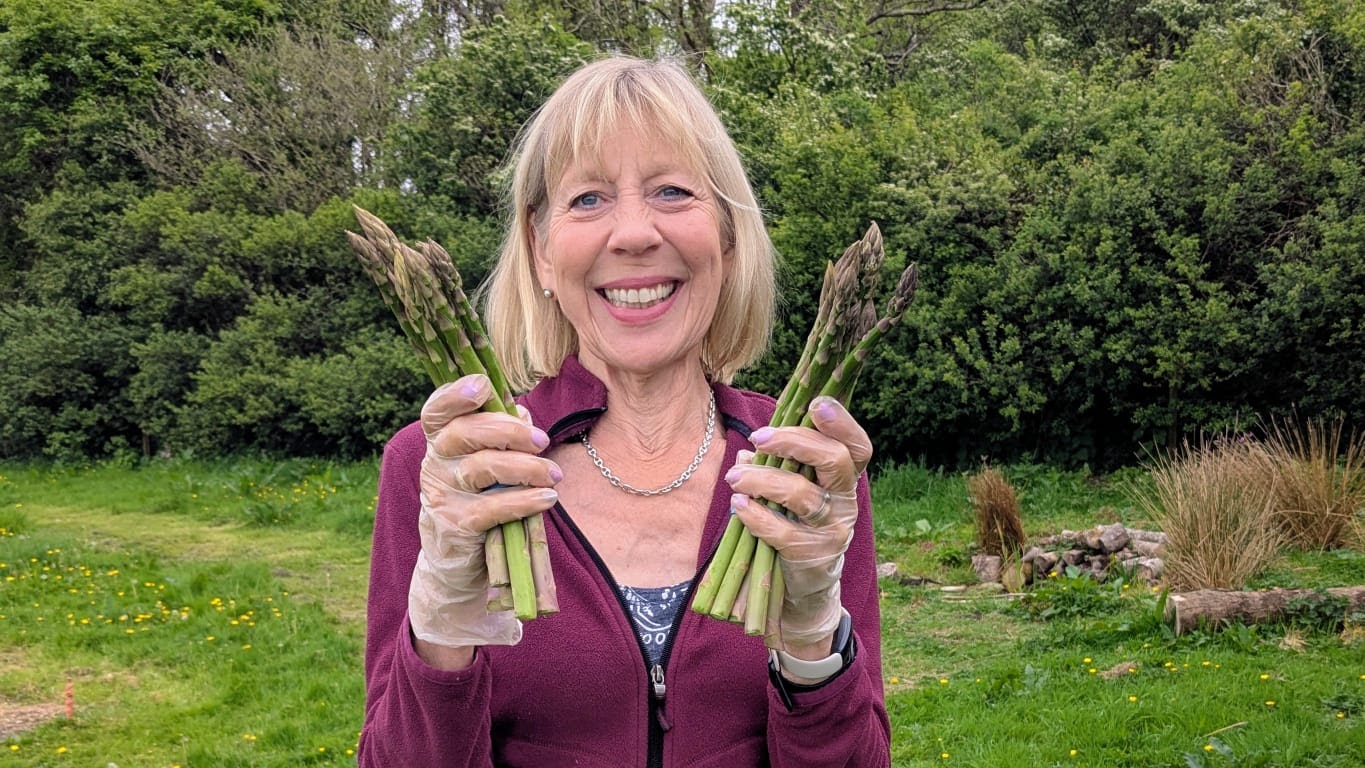
May 4, 2025
What a treat! These freshly-picked Cornish asparagus spears are absolutely delicious.
They’re grown only four miles away by our friends at St Enodoc Asparagus at Keiro Farm, St Minver.
You can’t get much more local than that.
In this week’s veg shares:
*spinach or rhubarb chard
*sprouted mung beans
*broad bean tops (Camel CSA / Mark Norman, Bodmin)
asparagus (St Enodoc Asparagus, St Minver)
cauliflower (Trerair Farm Shop, St Eval)
potatoes ‘Manitou’ (Trerair)
* = grown to organic principles. Please wash all veg thoroughly
Produce grown by Camel CSA, unless otherwise indicated
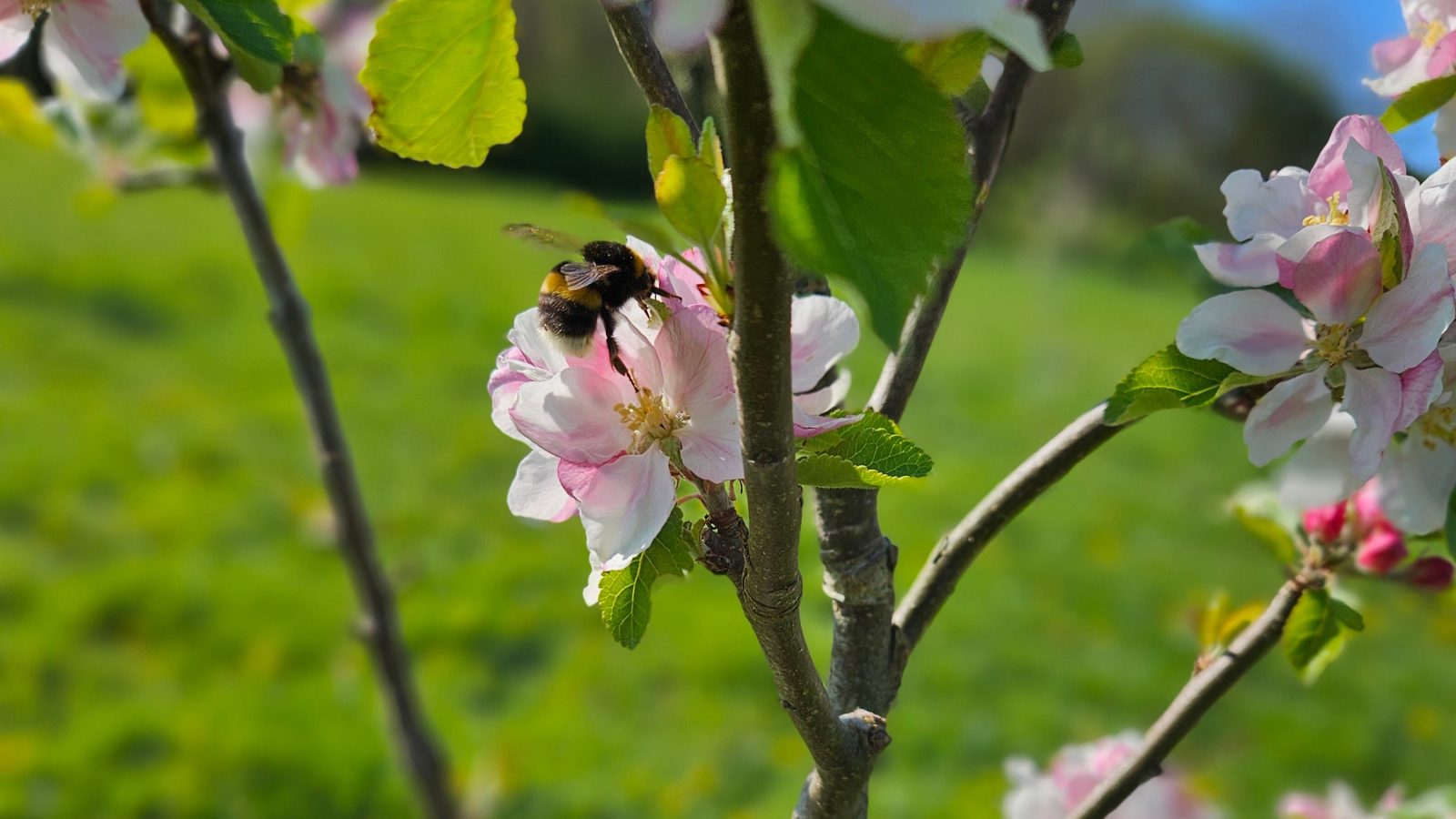
April 29, 2025
We have very happy bees. Our orchard in the meadow at Treraven Farm, Wadebridge, is only two years old and the blossom this year is amazing.
We’re now crossing our fingers we can harvest the first apples this autumn.
Worcester Pearmain is the traditional variety pictured here in glorious spring sunshine.
In this week’s veg boxes:
*rhubarb
*mixed salad leaves
*chard (Camel CSA) or *radishes (Mark Norman, Bodmin)
*spinach (Camel CSA) or *radishes (Mark Norman, Bodmin)
carrots (Trerair Farm, St Eval)
parsnips (Trerair)
potatoes (Trerair)
* = grown to organic principles. Please wash all veg thoroughly
Produce grown by Camel CSA, unless otherwise indicated
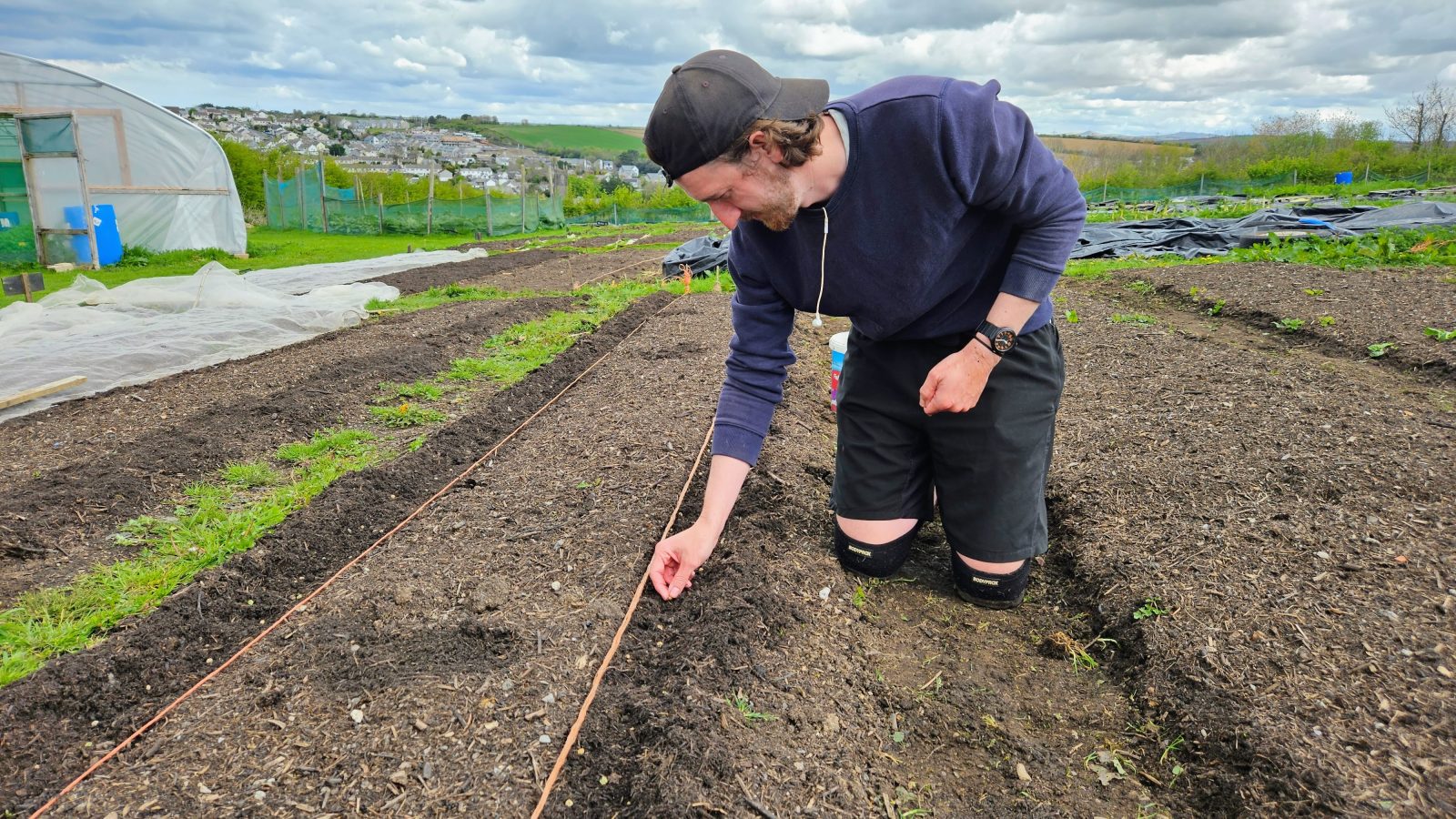
April 21, 2025
We have so much to do between the spring sunshine and heavy rain! Our vegetable growers and volunteers are working flat out:
- sowing peas (outdoors) and brassicas (in seed trays)
- weeding and mulching
- fixing bird boxes
- signposting crops
- preparing herb and pollinator beds
- transplanting aubergines, peppers, and tomatoes
We welcome volunteers. If you’d like to come and join our team at Treraven Farm, Wadebridge please go to https://camel-csa.org.uk/volunteer/ for more details
In this week’s veg boxes:
*spring onions
*mixed salad leaves
*chard
*spinach (Camel CSA) or *radishes (Mark Norman, Bodmin)
celeriac (Trerair Farm, St Eval)
cauliflower (Trerair)
potatoes (Trerair)
* = grown to organic principles. Please wash all veg thoroughly
Produce grown by Camel CSA, unless otherwise indicated
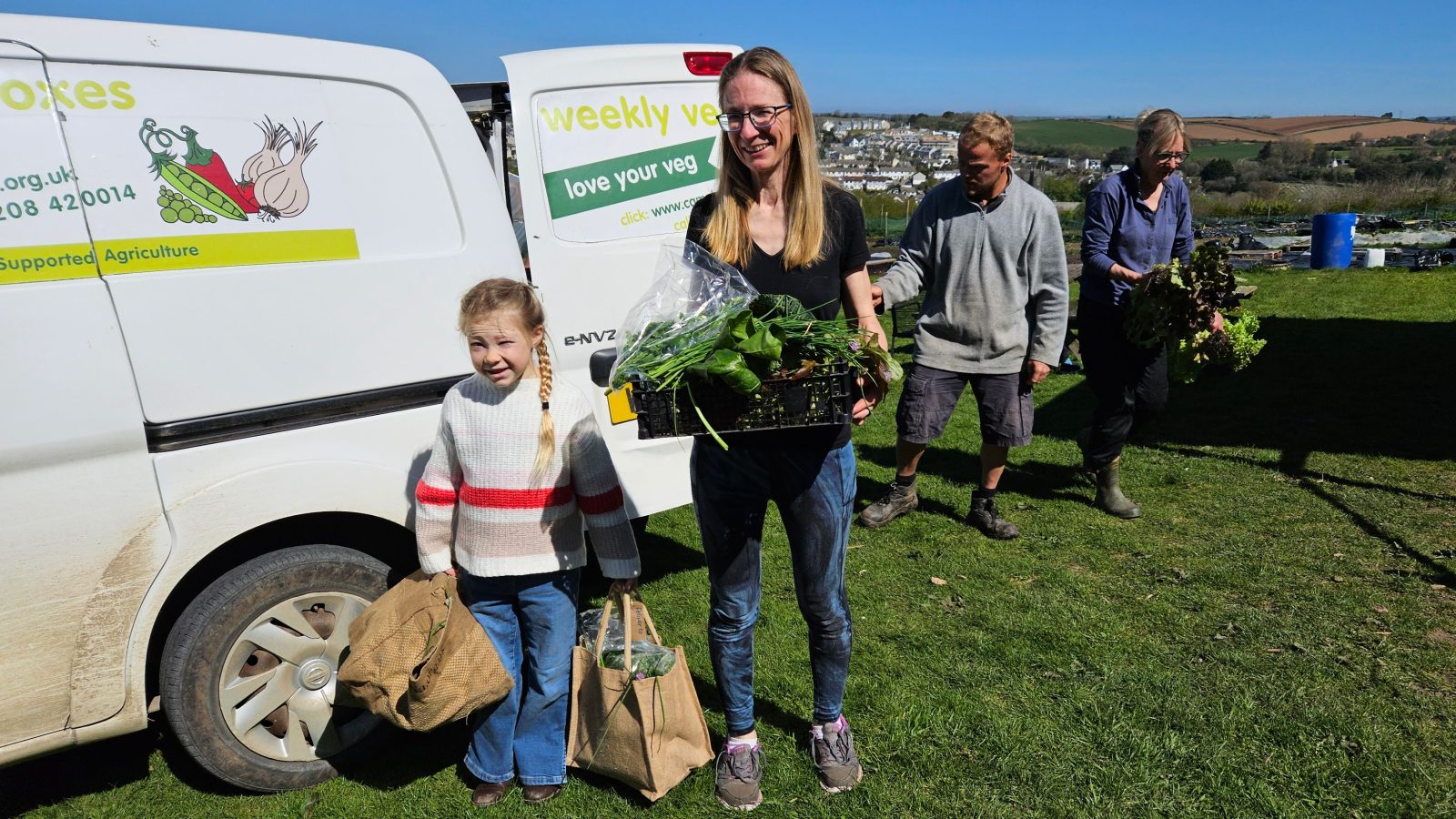
April 13, 2025
Our volunteers had an energetic Friday morning in the spring sunshine picking and packing copious amounts of gorgeous green leaves for our members’ weekly veg bags.
The bulk of them are delivered via electric van to pick-up points and doorsteps in village, town, coastal and moorland locations within the Wadebridge, Bodmin, Camelford triangle.
In this week’s veg boxes:
*whole lettuce
*spinach / radishes
*chives
*coriander
*sprouted mung beans
*rhubarb
*savoy cabbage (Mark Norman, Bodmin)
potatoes (Trerair Farm, St Eval)
* = grown to organic principles. Please wash all veg thoroughly
Produce grown by Camel CSA, unless otherwise indicated
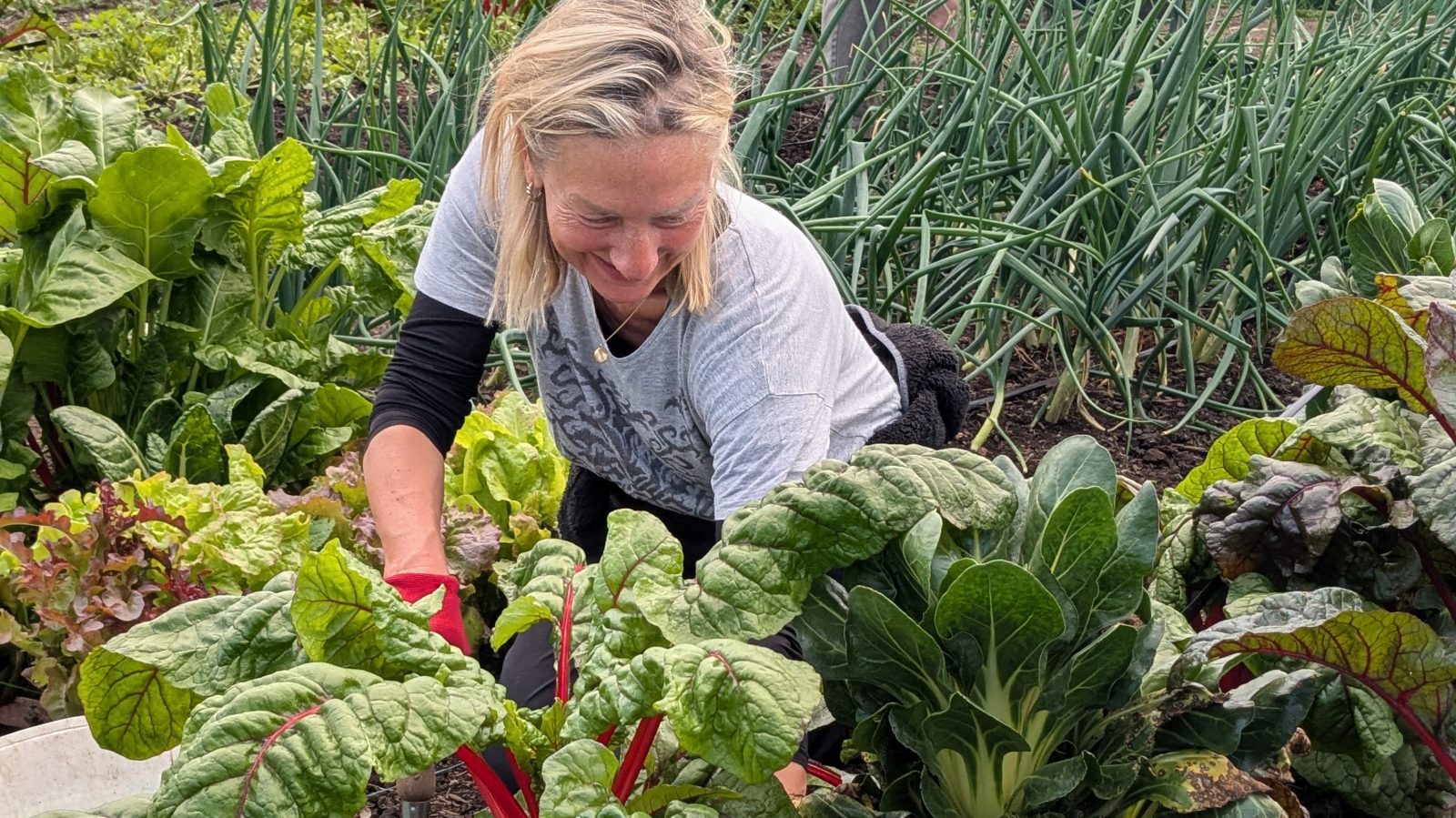
April 7, 2025
Simply the best! You can’t get fresher seasonal spring vegetables than these and they’re all locally grown.
All the veggies grown by us come from our polytunnels at Treraven Farm, Wadebridge, and the rest no further than 10 miles away. There really is nothing to beat local food produced on your own doorstep.
In this week’s veg boxes:
*spring onions
*chard / *pak choi
*mixed salad leaves
purple sprouting broccoli (Trerair Farm, St Eval)
cauliflower ‘Romanesco’ (Trerair)
potatoes (Trerair)
onions (Restharrow Farm, Trebetherick)
* = grown to organic principles. Please wash all veg thoroughly
Produce grown by Camel CSA, unless otherwise indicated
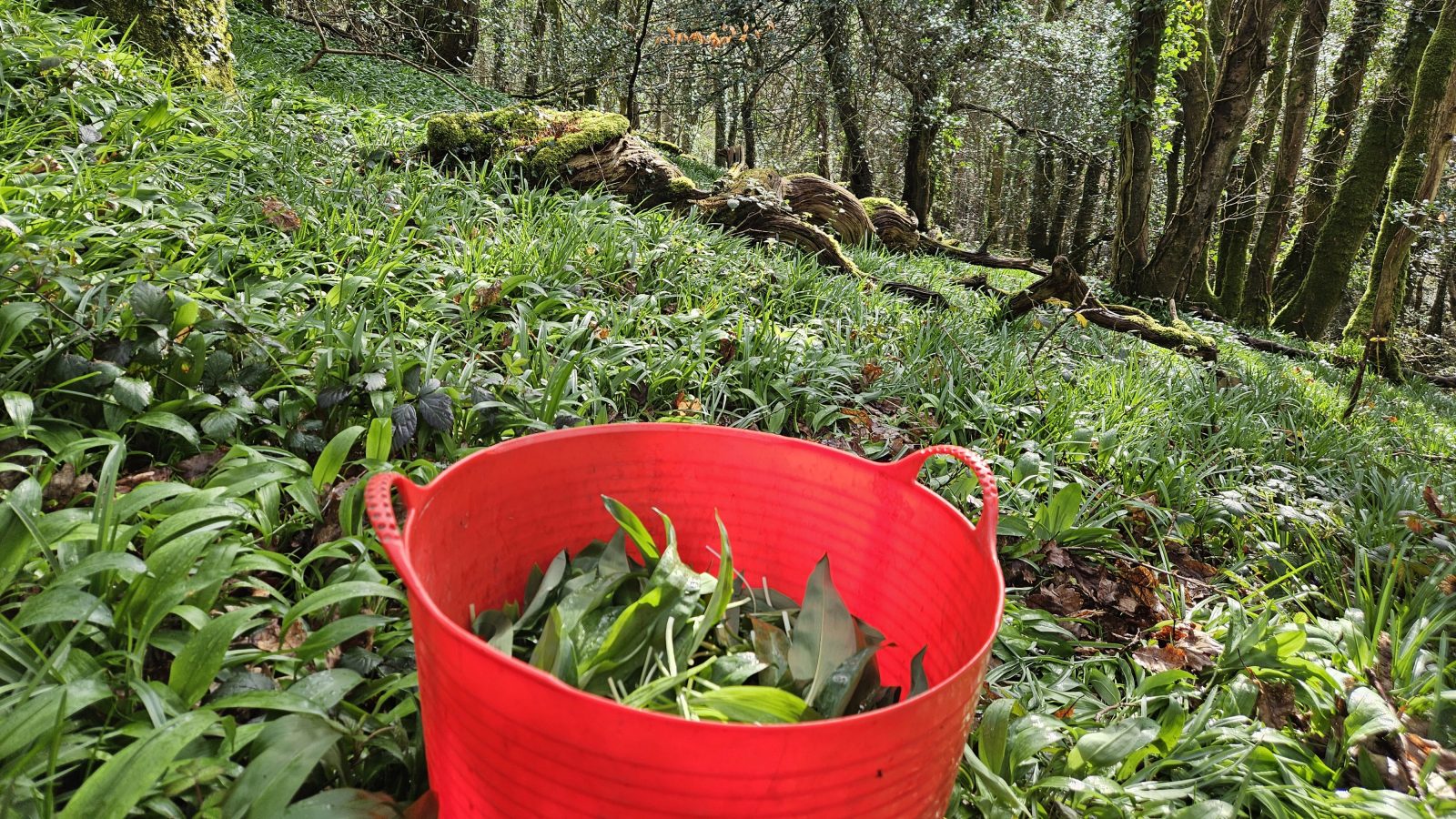
March 30, 2025
What an stellar seasonal selection we have in our spring vegetable boxes this week including wild garlic leaves foraged from the oak woods and the first juicy stalks picked from our rhubarb patch.
In this week’s veg shares:
*wild garlic leaves (foraged)
*rhubarb
*radish bunch
*red Russian kale (Mark Norman, Bodmin)
carrots (Trerair Farm, St Eval)
parsnips (Trerair)
potatoes (Trerair)
* = grown to organic principles. Please wash all veg thoroughly
Produce grown by Camel CSA, unless otherwise indicated
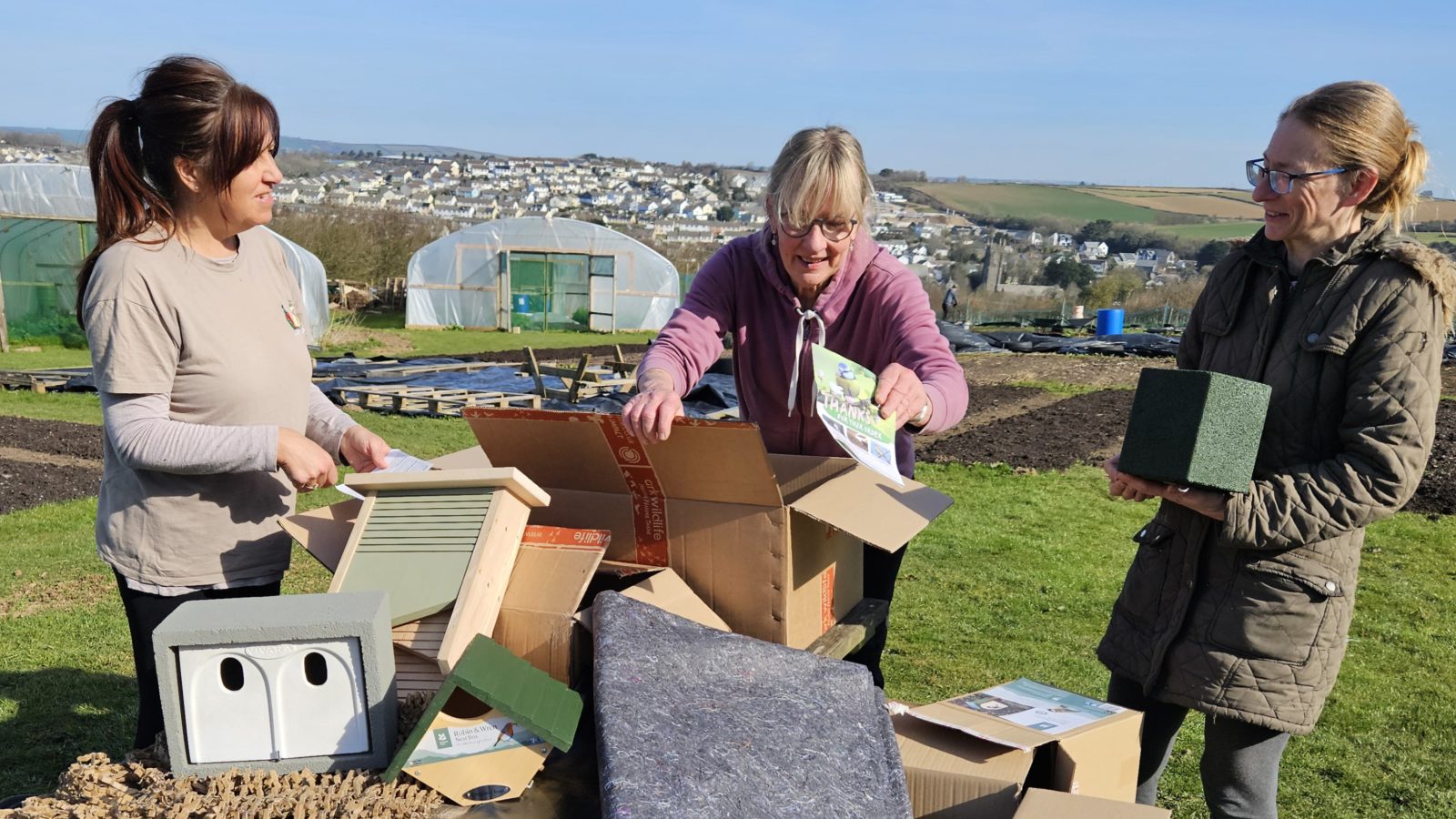
March 23, 2025
We’re taking action to encourage even more wildlife to our vegetable growing site at Treraven Farm, Wadebridge.
The growing team had great fun unpacking the bird and bat boxes supplied by Sustainable Food Cornwall‘s Joining the Dots for Nature scheme.
At the same time our volunteers have begun creating a natural pond to attract a feast of different plants, insects, larvae, toads, newts and other freshwater life.
The improvements are all part of a nature recovery plan for our no-dig veg site carried out by Cornwall Wildlife Trust on behalf of Joining the Dots.
We’re one of 15 community growing schemes in or near the Cornwall National Landscape chosen to take part in the initiative with funding from the Farming in Protected Landscapes (FiPL) programme.
We’ll be doing plenty more exciting nature-friendly things over the next few weeks so make sure you watch this space!
If you’d like to take part in any of these activities, please get in touch. If you know anyone else who might be interested, please share these details with them.
In this week’s veg shares:
*spring onions
*mixed salad leaves (mizuna, rocket)
*chard
*sprouted mung beans
cauliflower ‘Romanesco’ (Trerair Farm, St Eval)
savoy cabbage (Trerair)
potatoes ‘Manitou’ (Trerair)
* = grown to organic principles. Please wash all veg thoroughly
Produce grown by Camel CSA, unless otherwise indicated


